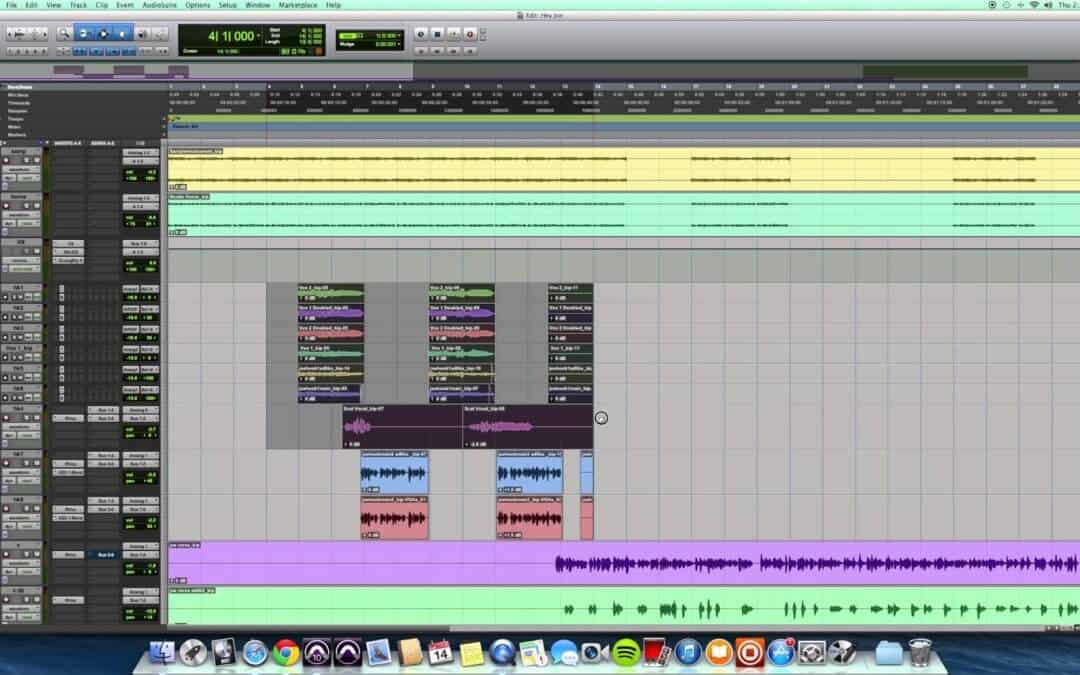Understanding the Hook
Definition
In music, a hook is a short, catchy phrase or segment designed to grab the listener’s attention. It’s the part of the song that gets stuck in your head and often becomes the most memorable aspect of the track. Hooks can be found in various elements of a song, including melody, lyrics, rhythm, and instrumental riffs.
Types of Hooks
- Melodic Hooks: These are often vocal lines or instrumental phrases that stand out due to their catchy melody. Think of the opening riff in The Rolling Stones’ “Satisfaction” or the chorus of Katy Perry’s “Teenage Dream.”
- Lyrical Hooks: These hooks focus on a catchy or impactful line of lyrics. A great example is the repetitive “Umbrella-ella-ella” from Rihanna’s “Umbrella.”
- Instrumental Hooks: These are non-vocal elements that catch the ear, such as the iconic piano riff in Vanessa Carlton’s “A Thousand Miles” or the bassline in Queen’s “Another One Bites the Dust.”
- Rhythmic Hooks: These hooks rely on a distinctive rhythm pattern to stand out. For instance, the handclaps in OutKast’s “Hey Ya!” create a rhythmic hook that’s instantly recognizable.
Importance
Hooks are crucial in music for several reasons:
- Engagement: A well-crafted hook can instantly engage listeners and keep them interested throughout the song.
- Memorability: Hooks make songs memorable. They are the parts that listeners hum or sing long after the song has ended.
- Commercial Success: Many hit songs owe their success to a strong hook. A catchy hook can help a song climb the charts and achieve widespread popularity.
- Branding: For artists, a signature hook can become part of their brand identity, making their music instantly recognizable.
Preparing the Hook
Composition
Creating a compelling hook starts with a solid composition. Here are some tips for writing a hook that will capture listeners’ attention:
- Simplicity: Keep it simple and easy to remember. The best hooks are often short, catchy, and repeatable.
- Repetition: Use repetition to make the hook stick in the listener’s mind. Repeating key phrases or melodies can make the hook more memorable.
- Contrast: Make your hook stand out by contrasting it with other parts of the song. This can be done through differences in melody, rhythm, or dynamics.
- Emotional Impact: Aim to evoke an emotional response. Whether it’s joy, sadness, excitement, or nostalgia, a hook that resonates emotionally will have a stronger impact.
- Uniqueness: Try to incorporate unique elements that differentiate your hook from others. This could be an unusual melody, a distinct rhythm, or creative lyrics.
Recording
Once you have composed your hook, the next step is recording it with high quality:
- Vocal Techniques: For vocal hooks, ensure the performance is clear and expressive. Use proper vocal techniques to convey the right emotion and energy.
- Instrumentation: Choose instruments that complement the hook and add to its impact. Experiment with different sounds and textures to find what works best.
- Microphone Placement: Proper microphone placement can significantly affect the quality of the recording. Experiment with different positions to capture the best sound.
- Environment: Record in a controlled environment with minimal background noise. Use soundproofing or isolation techniques if necessary.
Editing
Editing is crucial to refine the recorded hook and make it stand out in the mix:
- Timing and Tuning: Ensure that the timing is tight and the tuning is accurate. Use tools like quantization and pitch correction sparingly to maintain a natural sound.
- EQ and Compression: Use equalization to enhance the clarity and presence of the hook. Apply compression to control dynamics and ensure the hook remains prominent in the mix.
- Effects: Add effects like reverb, delay, and chorus to give the hook depth and character. Be mindful of not overusing effects, as they can muddy the sound.
- Layering: Create layers to add richness and complexity to the hook. This could involve duplicating tracks, adding harmonies, or using complementary sounds.
Flying the Hook
Definition and Purpose
Flying a hook involves strategically repeating and manipulating the hook throughout the song to maintain listener interest and enhance the song’s overall impact. This technique helps to reinforce the hook, making it more memorable and engaging. By skillfully flying a hook, you can keep the energy of the track consistent and captivate your audience from start to finish.
Timing and Placement
The placement and timing of the hook are crucial for maintaining the song’s flow and keeping the listener engaged. Here are some guidelines:
- Intro: Introduce a hint of the hook in the intro to set the tone and create anticipation.
- Chorus: The chorus is the most common place for a hook. Ensure the hook is strong and prominent here.
- Verses: Consider weaving elements of the hook into the verses subtly. This creates cohesion and reminds the listener of the main theme.
- Bridge: Use the bridge to introduce a variation of the hook, adding interest and preventing monotony.
- Outro: Reiterate the hook in the outro to leave a lasting impression on the listener.
Techniques for Flying a Hook
Copy and Paste Method
The simplest way to fly a hook is by copying and pasting the hook into different sections of the song. This method is straightforward but can be highly effective when used correctly. Make sure to adjust the hook slightly in each instance to keep it fresh and engaging.
Automation and Effects
Using automation and effects can add depth and variation to the hook. Here are some techniques:
- Volume Automation: Gradually increase or decrease the volume of the hook to create dynamic changes.
- Panning Automation: Move the hook across the stereo field to create a sense of movement.
- Filter Sweeps: Apply filter sweeps to introduce or remove frequencies, adding a sense of progression.
- Reverb and Delay: Use reverb and delay to create a sense of space and echo. Automate these effects for creative transitions.
Layering
Layering involves adding multiple tracks to the hook to create a fuller, richer sound. Here’s how to do it:
- Duplicate Tracks: Duplicate the hook track and slightly adjust the timing or pitch to create a chorus effect.
- Harmonies: Add vocal or instrumental harmonies to enhance the hook.
- Additional Instruments: Introduce new instruments that complement the original hook, adding complexity and interest.
Pitch Shifting and Time Stretching
Pitch shifting and time stretching are advanced techniques that can add variety to the hook:
- Pitch Shifting: Change the pitch of the hook to create different harmonic contexts. This can make the hook sound fresh when repeated.
- Time Stretching: Alter the timing of the hook to fit different parts of the song. This can create unique rhythmic variations.
Harmonization
Harmonizing the hook can add richness and complexity. Here’s how:
- Vocal Harmonies: Add vocal harmonies at intervals such as thirds, fifths, or octaves to create a layered sound.
- Instrumental Harmonies: Use instruments to harmonize with the hook, creating a fuller arrangement.
Conclusion
Recap
Flying a hook is a powerful technique in music production that helps create memorable and engaging songs. By understanding the basics of what a hook is, composing and recording it effectively, and then using advanced techniques to manipulate and repeat it throughout the track, you can significantly enhance the impact of your music.
If you need help getting your song ready to release on Spotify, feel free to reach out so we can get your song professionally mixed and mastered.







